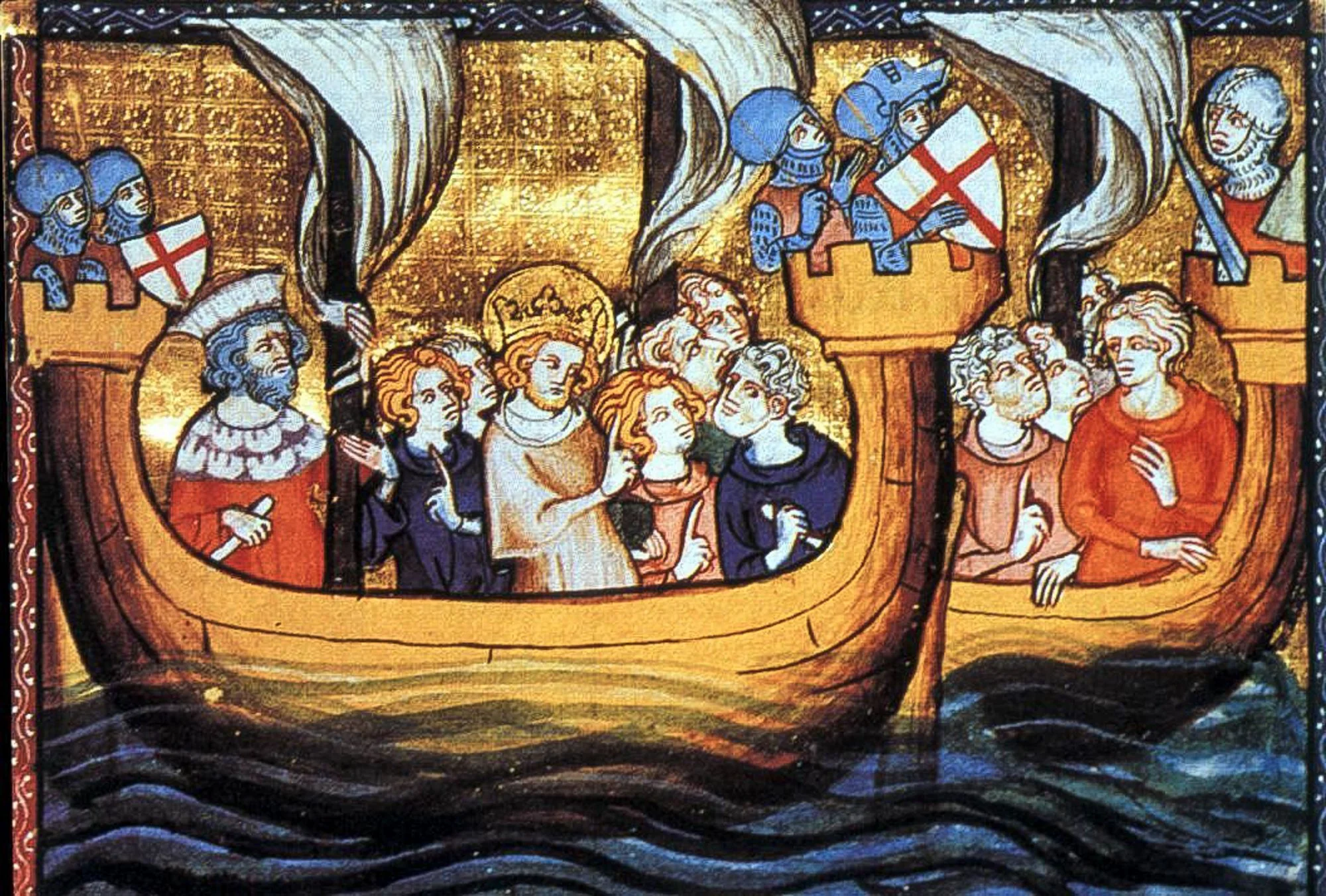A Story of Faith, Fire, and Far Horizons
Louis IX (Saint Louis, 1214 - 1270) on a ship departing from Aigues-Mortes, for the Seventh Crusade.
In the closing years of the 11th century, a dramatic call echoed through the vaulted halls of medieval Europe. At the Council of Clermont in 1095, Pope Urban II, standing before an assembly of lords and clerics, issued a passionate appeal: to journey eastward and reclaim Jerusalem, the holiest of cities, from Muslim rule.
The Pope's words, laden with religious fervor and political intent, offered salvation and absolution, but also a sense of purpose to a continent gripped by spiritual tension, overpopulation, and shifting power structures. “Deus vult!”—“God wills it!”—became the rallying cry of thousands.
This moment was the spark that ignited the Crusades, a series of armed pilgrimages that would span two centuries. Though born from spiritual longing, the Crusades quickly became entwined with ambitions of power, wealth, and land. They were as much a collision of empires as they were a pilgrimage of souls.
The Crusades:
The story of the Crusades is not one of a single war, but a series of waves, each shaped by shifting motives and unfolding with consequences that continue to ripple across history.
First Crusade (1096–1099): A Blood-Stained Victory
From farms and fiefdoms, a mass of knights, peasants, and clergy poured eastward, driven by Urban’s promise of salvation. They faced disease, starvation, and endless hardship. Yet, in 1099, they breached the walls of Jerusalem, bathing the city in blood and claiming it for Christendom. The Kingdom of Jerusalem and other Crusader states were born—fragile footholds in the Islamic world.
Second Crusade (1147–1149): Failure and Fracture
Alarmed by the fall of Edessa, Europe's monarchs—Louis VII of France and Conrad III of Germany—led another expedition. Poorly organized and badly coordinated, their efforts faltered. The failure deepened divisions and sowed disillusionment among the faithful.
Third Crusade (1189–1192): The Duel of Titans
The legendary Muslim leader Saladin recaptured Jerusalem in 1187, prompting a high-profile response: Richard the Lionheart, Philip II, and Frederick Barbarossa rallied armies. After epic sieges and fierce battles, Richard retook territory but failed to reclaim the city. Still, Christian pilgrims were again allowed to enter Jerusalem. Chivalry and respect marked this war, especially between Richard and Saladin.
Fourth Crusade (1202–1204): Christians Against Christians
What began as a campaign to reclaim the Holy Land ended in tragedy. Manipulated by Venetian interests and internal politics, Crusaders diverted to Constantinople, sacking the Eastern Christian capital in 1204. This deepened the schism between East and West, and revealed how secular motives had begun to outweigh spiritual ones.
Albigensian and Baltic Crusades (1209–13th Century): Faith Turned Inward
The Church now pointed the cross inward. In southern France, the Albigensian Crusade targeted the Cathar heretics—brutal and effective. Meanwhile, in the Baltic, crusading knights turned their swords on pagan tribes, expanding Christendom into northeastern Europe.
Fifth and Sixth Crusades (1217–1229): Negotiation Over Blood
New efforts focused on Egypt, the strategic key to the Holy Land. The Fifth Crusade failed, but Emperor Frederick II in the Sixth Crusade achieved what armies had not: a peaceful handover of Jerusalem. Yet, it was short-lived. Within a decade, the city was lost again.
Seventh and Eighth Crusades (1248–1270): The Last King’s Crusades
Led by the devout Louis IX of France, these later campaigns ended in disaster. Captured in Egypt during the Seventh, and dead in Tunisia during the Eighth, Louis’ noble attempts showed that the age of Christian military dominance in the East was waning.
1291: The Fall of Acre and the End of an Era
The Crusader stronghold of Acre fell to the Mamluks, marking the collapse of Christian rule in the Holy Land. The dream of a permanent Christian Jerusalem was over. The Crusader states vanished, and with them, the last hope of a European kingdom in the Levant.
Further Reading
Thomas Asbridge, The Crusades: The War for the Holy Land
Christopher Tyerman, God’s War: A New History of the Crusades
Carole Hillenbrand, The Crusades: Islamic Perspectives
Jonathan Riley-Smith, The Crusades: A History
Helen Nicholson, The Crusades: A Beginner’s Guide


